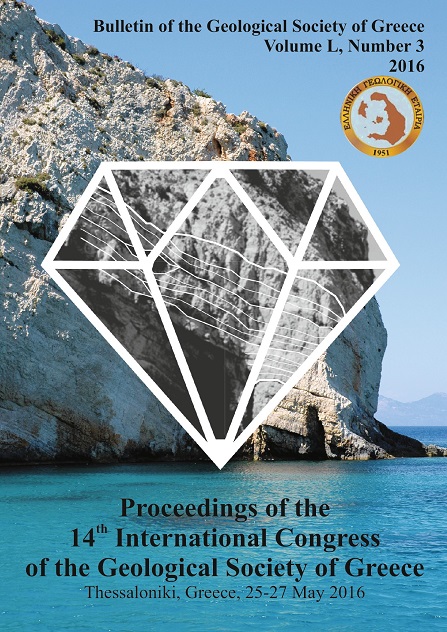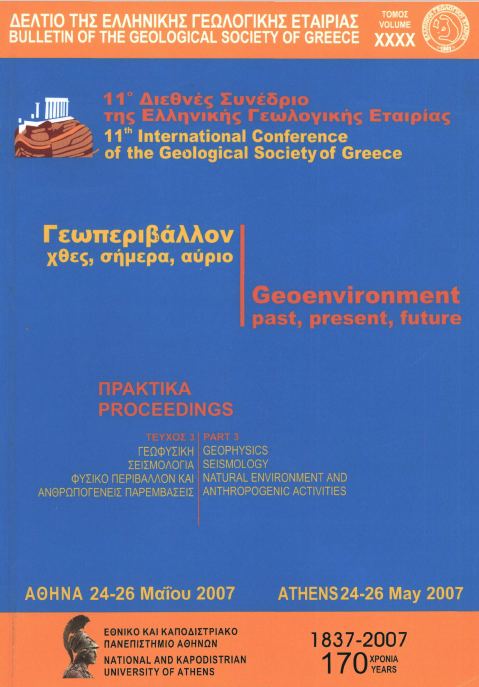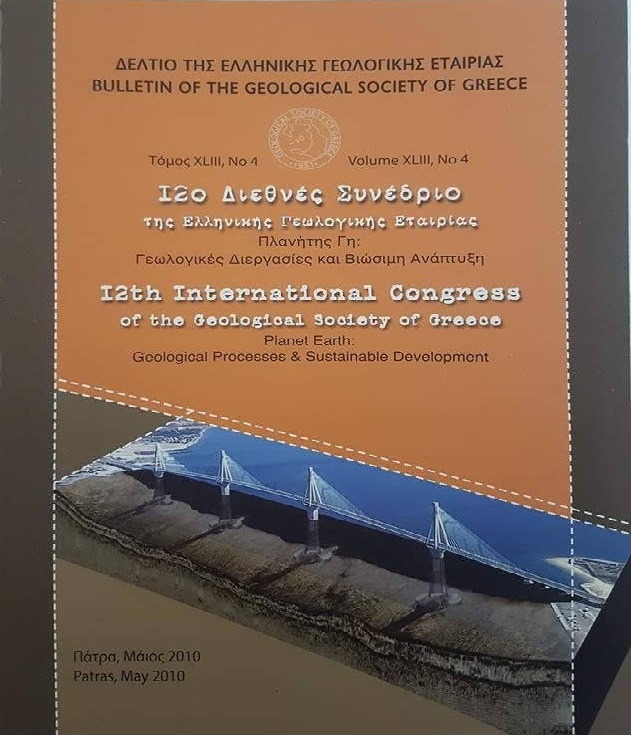CHARACTERISTICS OF SEISMIC EXCITATIONS IN CORINTH GULF (GREECE)

Περίληψη
Οι σεισμικές εξάρσεις διακρίνονται σε μετασεισμικές ακολουθίες οι οποίες συνδέονται με τη γένεση ενός κύριου σεισμού μεγαλύτερου σε μέγεθος από τους υπόλοιπους της ακολουθίας και σε σμηνοσεισμούς στους οποίους δεν εμφανίζεται σεισμός με διακριτά μεγαλύτερο μέγεθος από τους υπόλοιπους. Σε περιοχές όπως ο Κορινθιακός κόλπος όπου η ενέργεια παραμόρφωσης εκδηλώνεται υπό τη μορφή συχνών σεισμικών εξάρσεων, είναι σημαντική η διάκρισή τους σε μετασεισμικές ακολουθίες ή σμηνοσεισμούς διότι συμβάλλει στην κατανόηση των φυσικών διεργασιών σεισμογένεσης καθώς και στην εκτίμηση της σεισμικής επικινδυνότητας. Για το λόγο αυτό δημιουργήθηκε ένας κατάλογος σεισμών ακριβής ως προς τις εστιακές παραμέτρους των σεισμών από τον οποίο αναγνωρίσθηκαν οι σεισμικές εξάρσεις βάσει χωροχρονικών κριτηρίων που τέθηκαν. Για κάθε αναγνωρισμένη σεισμική έξαρση υπολογίστηκαν η λοξότητα και η κύρτωση της σεισμικής ροπής ως προς το χρόνο. Οι μετασεισμικές ακολουθίες είχαν μεγάλες θετικές τιμές λοξότητας και κύρτωσης σε αντίθεση με τους σμηνοσεισμούς οι οποίοι είχαν αρνητικές έως χαμηλές θετικές τιμές της λοξότητας και μικρότερες τιμές κύρτωσης. Με σκοπό την επαλήθευση της διάκρισης των σεισμικών εξάρσεων υπολογίστηκαν οι τιμές της παραμέτρου b, το μήκος της σεισμικής ζώνης και ο αριθμός των σεισμών για κάθε σεισμική έξαρση. Τέλος, βρέθηκε σχέση μεταξύ του μήκους της σεισμικής ζώνης και του μέγιστου μεγέθους για τις μετασεισμικές ακολουθίες.
Λεπτομέρειες άρθρου
- Πώς να δημιουργήσετε Αναφορές
-
Mesimeri, M., Karakostas, V., Papadimitriou, E., & Tsaklidis, G. (2016). CHARACTERISTICS OF SEISMIC EXCITATIONS IN CORINTH GULF (GREECE). Δελτίο της Ελληνικής Γεωλογικής Εταιρείας, 50(3), 1379–1388. https://doi.org/10.12681/bgsg.11851
- Ενότητα
- Σεισμολογία

Αυτή η εργασία είναι αδειοδοτημένη υπό το CC Αναφορά Δημιουργού – Μη Εμπορική Χρήση 4.0.
Οι συγγραφείς θα πρέπει να είναι σύμφωνοι με τα παρακάτω: Οι συγγραφείς των άρθρων που δημοσιεύονται στο περιοδικό διατηρούν τα δικαιώματα πνευματικής ιδιοκτησίας επί των άρθρων τους, δίνοντας στο περιοδικό το δικαίωμα της πρώτης δημοσίευσης. Άρθρα που δημοσιεύονται στο περιοδικό διατίθενται με άδεια Creative Commons 4.0 Non Commercial και σύμφωνα με την οποία μπορούν να χρησιμοποιούνται ελεύθερα, με αναφορά στο/στη συγγραφέα και στην πρώτη δημοσίευση για μη κερδοσκοπικούς σκοπούς. Οι συγγραφείς μπορούν να: Μοιραστούν — αντιγράψουν και αναδιανέμουν το υλικό με κάθε μέσο και τρόπο, Προσαρμόσουν — αναμείξουν, τροποποιήσουν και δημιουργήσουν πάνω στο υλικό.






